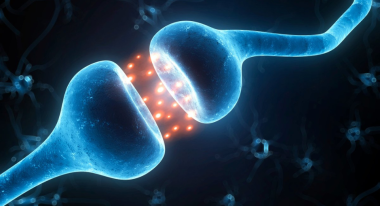Levodopa-Induced Dyskinesias Reversed in Gene Therapy Study

Levodopa-induced dyskinesias (LIDs) are a debilitating side effect of long-term use of levodopa therapy that negatively impacts the quality of life for upwards of 90% of people with Parkinson’s disease (PD). From the Greek word, dys, meaning ill or bad, and kīnēsia, meaning movement or muscular activity, dyskinesias are abnormal, involuntary muscle movements, often presenting as erratic writhing movements of the face, arms, legs or trunk.
This side effect is caused by the loss of dopamine in the striatum (a structure in the brain). That loss of dopamine causes the calcium channels in the brain to not function properly.
Why do calcium channels matter?
The human brain has roughly 100 billion interconnected cells. A calcium channel lets calcium into each cell, allowing it to function normally. Previous studies in rats have shown that calcium activity in the brain plays an important role in the onset of Parkinson’s. These channels are also believed to contribute to levodopa-induced dyskinesias.
Evidence suggests that silencing one specific type of these calcium channels might hold some therapeutic promise. The Cav1.3 channel is the calcium channel found in the striatum and is made by the human CACNA1D gene. There are existing drugs that can inhibit these calcium channels. However, these drugs are not very potent. For people with PD, they only partially help with levodopa-induced dyskinesias and the relief only lasts a short time, but hope may be on the horizon.

Gene Expression and Gene Silencing
Genes tell cells how to make proteins. This instruction process is called gene expression. Like a dimmer switch, gene silencing is the regulation of gene expression in a cell that prevents or reduces that expression. Figuring out how to identify and silence certain genes is being increasingly studied to help find new therapeutic avenues to combat diseases.
Funded by the Parkinson’s Foundation and the National Institute of Neurological Disorders and Stroke, the study “Genetic Silencing of Striatal CaV1.3 Prevents and Ameliorates Levodopa Dyskinesia” (Steece-Collier et al., 2019) investigated whether silencing of striatal CaV1.3 channels genetically ― as opposed to using medications ― might have the potential to transform Parkinson’s treatments. If successful, this approach could lead to the development of new highly targeted drugs that would allow people with PD to enjoy the motor benefits of levodopa, without the debilitating LID side effects.
To validate the CaV1.3 as a potential target for drugs that might reduce the LID, Kathy Steece-Collier, PhD, and her research team created a virus in their lab that delivers genetic material into cells to target the CaV1.3 channel and prevent it from being made. This virus is a stripped-down version of a normal virus, with all the harmful viral information removed, and is called a viral vector. They injected the viral vector into severely parkinsonian rats to see if that would reduce expression of CaV1.3 channels and thereby impact LIDs.
This was a two-month study that included a control group of severely parkinsonian rats for comparison (that would not receive the genetic treatment). Both groups of rats received increasing doses of Levodopa over time. All rats were regularly tested both prior to and after introducing levodopa therapy.
Results
- If the CaV1.3 channels are silenced in severely parkinsonian rats prior to giving them levodopa therapy, this was able to completely prevent LID symptoms from forming.
- Even with very high doses of daily levodopa, the prevention of LIDs remained and did so, long-term.
- This experimental approach was capable of even partially reversing the LID in rats with established, preexisting severe LID behavior. Current calcium channel drugs are not able to do this.
- The positive therapeutic (motor) benefits of levodopa remained throughout gene silencing.
- As expected, in group of rats who did not receive the genetic treatment, LID worsened severely as the levodopa dose was increased.
What Does This Mean?
This study suggests that reducing the number of CaV1.3 calcium channels has the potential to transform the treatment of individuals with PD by allowing maintenance of the motor benefit of levodopa without the debilitating side effect of LIDs. Further, this study demonstrated it was possible to reverse preexisting, severe levodopa-induced dyskinesias. So, not only did the experimental approach have a protective/preventative effect, it helped the rats that were already severely impaired.
What we don’t know, yet, is whether or not reducing striatal CaV1.3 expression will work in people. However, the authors of this article stated that if the findings of this study can be validated clinically in people, this would be “a much-needed breakthrough in the treatment of individuals with PD and has the potential to allow the most powerful antiparkinsonian therapy identified (i.e., levodopa) to work unabated through the duration of the disease.”
In short, though there is much more work that lies ahead, this preclinical data suggests it may indeed be possible to prevent, and even reverse LIDs, which would be an extraordinary finding for the PD community.
Learn More
The Parkinson’s Foundation believes in empowering the Parkinson’s community through education. Learn more about the Parkinson’s and LID in the below Parkinson’s Foundation resources or by calling our free Helpline at 1-800-4PD-INFO (473-4636).
Related Blog Posts


